What happened to the once-popular Loot?
Written by: Lao Yapi, FastDaily
Loot was born a year ago. The hype around NFTs has ended, but the hope for the "Lootverse" remains.
The list of fantasy gear sparked a boom (and bust) in the market, but it also ignited the imagination of builders. Games and media inspired by "loot" are about to be released—while the launch of "loot 2" NFTs could accelerate growth.
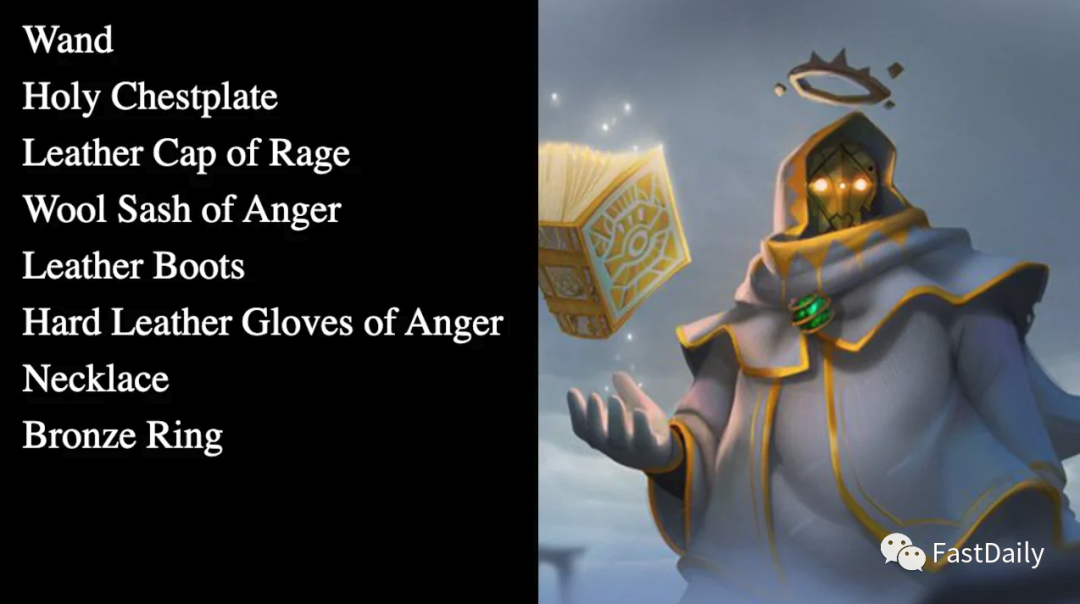 From Loot (left) to HyperLoot, the "Lootverse" is growing.
From Loot (left) to HyperLoot, the "Lootverse" is growing.
It all started with a tweet.
Dom Hofmann, famous in the tech world as the creator of the video app Vine, posted a free minting announcement for an Ethereum NFT, with only white text on a black background. Loot (for Adventurers) includes 8,000 tokenized "bags" of fantasy weapons and items; in Hofmann's words, it is "random adventurer gear." It minted within hours.
For some, this represented the absurdity of the NFT craze. Who would spend ETH on gas fees to mint something like this? ------ Gas fees could soar to hundreds or thousands of dollars. But for others, Loot was a revolutionary advancement: an open-source framework for community-driven intellectual property, where user-owned games and media correspond and mutually reinforce each other.
The hype would spike but not last. While the average price of Loot NFTs soared to over 21 ETH, around $84,000, the speculative frenzy quickly dissipated. Prices fell, trading volume slowed, and the noise quieted down within weeks of its launch. But the creative spark of Loot was real.
A small community of creators continued to use NFTs as "scaffolding" to inspire a series of games and more innovations. A year after the hysteria, the builders of "Lootverse" spoke to the media about building after the hype failed, discussing why they believe this is the beginning of a creative revolution and how to accelerate "Loot 2."
Paradigm Shift
Before joining Web3, Hofmann co-founded Vine and other tech startups. He initiated the NFT project Blitmap, co-created Nouns, and is now building on-chain games with Sup. But it turned out that Loot had a unique feel.
It was an experiment, and he treated Loot as such. Aside from the gas fees of the Ethereum network—mandatory transaction fees paid to the network—he did not charge any fees to mint one of the 7,777 publicly available NFTs (the other 223 were reserved for Hofmann), nor did he attach creator royalties on secondary sales. Hofmann recently told the media that charging for such a speculative project or expecting royalties "felt wrong."
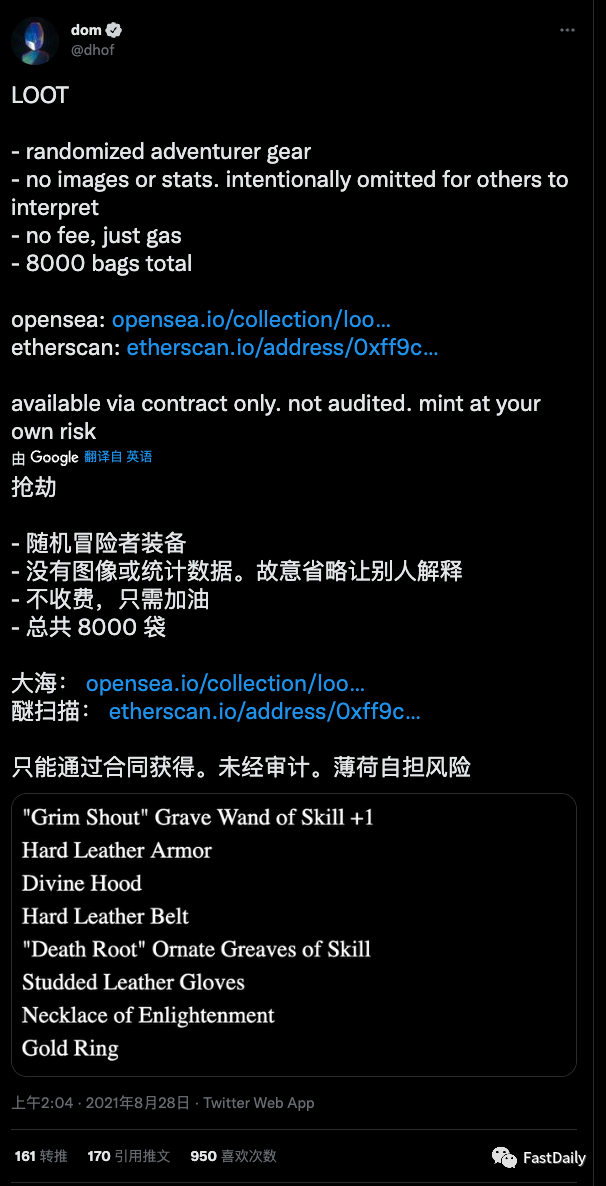
Moreover, NFTs could only be minted directly from the smart contract itself—the code that executes collection instructions and powers NFTs and decentralized applications—making it less accessible for casual users and cryptocurrency newcomers. He said this was a deliberately set friction designed to attract experienced users or those willing to break through barriers.
Hofmann said, "These decisions were made to reinforce the project's bottom-up drive and the consensus of community spirit."
Loot was kept as simple as possible so that others could build whatever they wanted on top of it. Each NFT contained a simple Dungeons & Dragons-style item list. For example, a bronze ring or a skill +1 "Grim Shout," a tomb wand. There were no visual components or listed statistics. Hofmann stated on Twitter, "Both of those things were intentionally omitted."
While Loot's ambiguous listings left some scratching their heads, many Web3 enthusiasts held their breath, praising its potential as a composable, blockchain-driven baseline for future fantasy games and media. What if Loot's bags could lead to characters, worlds, and stories all starting from the same seed and growing together over time?
Loot had no leader, and no company made unilateral decisions about the IP. In other words, there were no gatekeepers. It perfectly aligned with the ethos of permissionless cryptocurrency; a public good for collaborators to use as a narrative starting point. The website stated, "Feel free to use Loot in any way."
Software engineer Thanakron Tandavas called it a "paradigm shift in the NFT space" at launch, praising its bottom-up design that encouraged community-led building. John Palmer, creator of PartyBid, likened its impact to that of the NFT icon CryptoPunks, saying, "There was Loot before, and now there is After Loot." Even Ethereum creator Vitalik Buterin praised Loot's open approach.
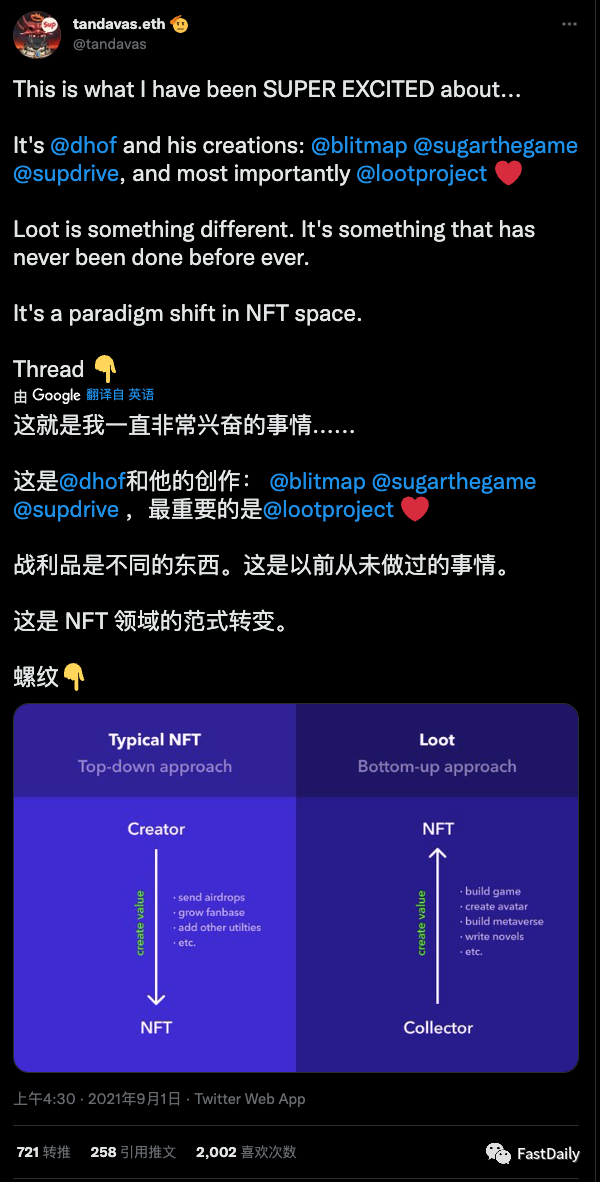
Web3 creators took the hint. Within days, people were sharing their own artworks around Loot, along with guilds, music, legends, companion animals, and more. Will Papper, co-founder of SyndicateDAO, even launched an adventure token (AGLD) for the ecosystem, allowing Loot holders to claim 10,000 tokens—at the peak, each NFT bag was worth $77,000.
According to CryptoSlam data, all of this contributed to a brief but explosive market boom around NFTs, ultimately generating approximately $280 million in secondary trading volume to date. Last October, an NFT bag sold for over $1.4 million in ETH. Derivatives and knockoffs followed. The Loot revolution seemed to have a quick start.
Boom and Bust
But this hype did not last long. Last fall, as Ethereum's value declined, the prices of Loot on the secondary market quickly fell with the cooling of the NFT market itself. According to CryptoSlam data, demand plummeted from $221 million in trading volume in September 2021 to below $12 million in October, a 95% crash.
For those who spent tens of thousands of dollars to purchase a Loot NFT, it was hard to find a buyer at a fraction of the price. Some speculators hoping to profit from quick flips found their speculative actions undermined by Loot's brief moment in the NFT spotlight. Today, Loot's floor price is possibly the cheapest NFT on the market—only 0.93 ETH, or under $1,600.
It wasn't just individual investors. Kyle Samani, managing partner of investment firm Multicoin Capital, boasted on Twitter that he purchased "eight figures of Loot" in September 2021, adding a cheeky "AMA" (Ask Me Anything) to his tweet. This was Multicoin's first NFT investment, and Samani claimed Loot was "the first investable crypto-native game," using it to justify his investment.
Months later, someone asked how that investment was faring. Samani admitted, "It dropped 95%," but added, "I was willing to take the risk of losing 100%, it was very important for our long-term success." Multicoin Capital declined to comment on this story.
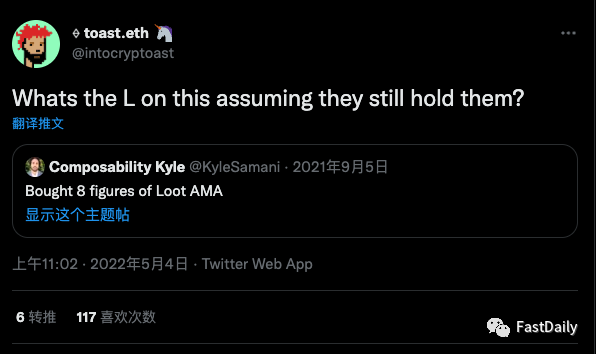
Ultimately, the rapid boom and bust speculative cycle cast a shadow over the Loot project. The excitement for open-source, composable projects was largely overshadowed by the bizarre amounts some paid for NFTs, and as Loot's market cap evaporated, some buyers reflected on how much they had lost.
Hofmann himself never promised NFT buyers anything. However, given the hype cycle, expectations were high. Some loudly questioned where the games based on Loot actually were. Creative projects can take a considerable amount of time to execute, but that does not align with the fast-moving NFT space and impatient investors' expectations for quick returns.
Hofmann told the media he reflected on this moment: "The hype has a certain effect, it starts to reinforce itself and finds itself existing outside of the core concepts and ongoing actual work, timelines and expectations can get distorted, which can create some noise and friction."
Some early adopters of Loot, native to Web3, continued to build after the hype faded. However, the perception that Loot was a failed project posed challenges in bringing in new collaborators and getting their expansions and projects off the ground.
Threepwave, a builder and developer of the Loot dungeon mapping project Crypts & Caverns and the Lootverse game Realms, said, "Loot became incredibly popular and then incredibly unpopular, some of my friends said, 'What are you doing? You're crazy.' The hacker stuff cost me a lot of money. It left a bad reputation among people."
LordOfAFew, founder of Pseudonym Realms, cited Loot's "boom and bust cycle" and acknowledged that fewer creators have entered the space since its launch last year. However, he said that despite the declining NFT prices and waning attention, many builders are still working persistently. He said, "It's not scary for them at all."
Entering the Lootverse
A year later, we are beginning to see significant progress in games and storytelling initiatives born from Loot's openness. Some are built on the original Ethereum NFTs and interact directly with them, while others are inspired but use their own NFTs. Creators collectively refer to it as the Lootverse.
Timshel explained, "What’s happening inside Loot is a group of builders working together, experimenting with the rough edges of what blockchain can do, and building these composable 'blocks' that fit together in interesting ways." He is a co-creator of the genesis project based on Loot and runs the Loot Foundation website to encourage further building.
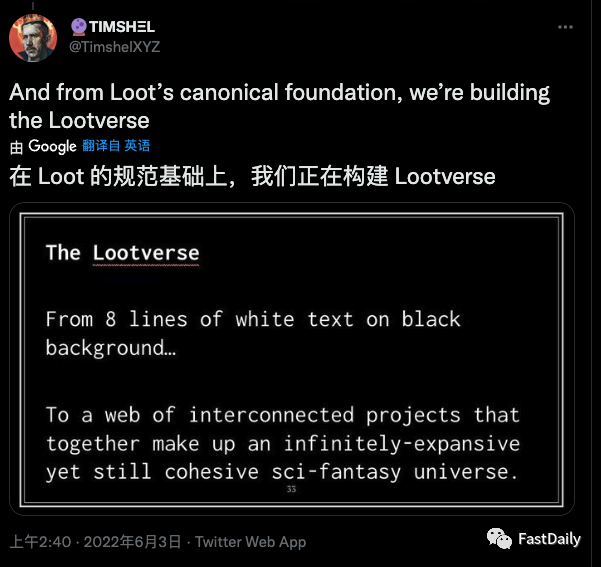
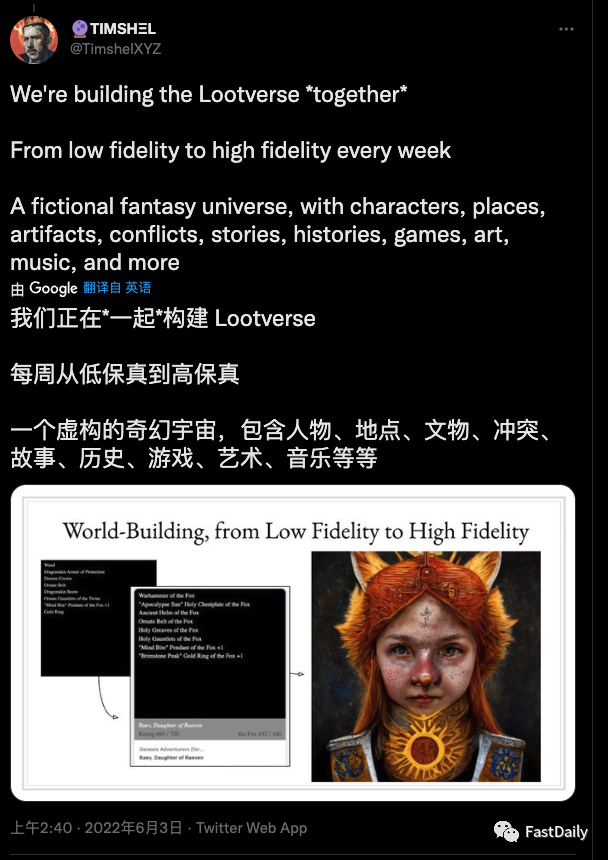
In addition to the initial experimental derivatives from different creators, Timshel and other builders LootHero and Peter Watts discovered a hidden classification and rating system within Loot's smart contract code data, which could develop more consistent legends around the bags.
This led to the birth of Genesis Loot—bags supposedly held by early adventurers in the community-driven Loot legends—and a legend development toolkit that provides guidelines builders can utilize (if they wish). Meanwhile, the Lootverse NFT project Banners claims to provide a "social and political layer of Loot."
Crypts & Caverns is a key part of the on-chain Lootverse infrastructure, providing builders with dungeon maps to incorporate into games and applications, potentially saving a time-intensive step. Threepwave told the media, "Now you are at least far along in making a decent dungeon crawl game or exploration game."
Loot MMO is one of the games utilizing the maps; it is a visually appealing fantasy role-playing game running on Unreal Engine through Manticore Games' core platform—similar to many large games today. The game leverages player-owned loot NFTs, including the original bags, more loot expansion bags, and various community projects.
Meanwhile, Realms is an Eternum resource management game running on Ethereum's scaling network StarkNet. It has made smooth progress in development and is nearing a broader testing phase. LordOfAFew demonstrated the game to the media, showcasing a menu-driven event that includes military units, buildings, farming, and other variables that players control before raiding online opponents.
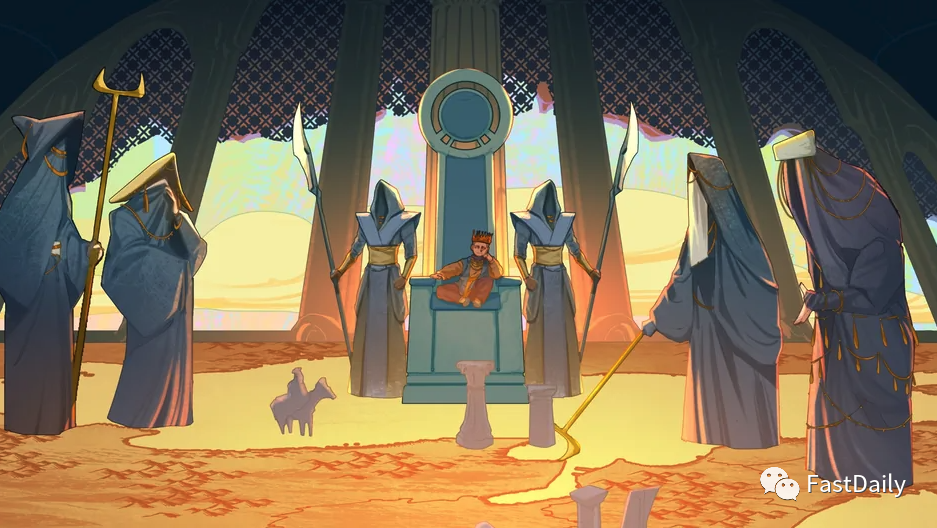 Artwork from the Loot-inspired game "Realms"
Artwork from the Loot-inspired game "Realms"
Another interesting game project in the Loot universe is HyperLoot, which uses Loot bags to visualize a 3D avatar that could be used across various game worlds. Tandavas told the media that this is a "second-layer visual component" built on Loot NFTs, and he is creating a combat game called CC0 Wars, featuring characters from Nouns and other projects with "no rights reserved" CC0 licenses.
However, the Loot community is not just about creating games and related infrastructure. It is also producing stories and pushing the boundaries of on-chain storytelling. Timshel's Open Quill collective is compiling a Loot-inspired storybook that will be published in both physical and NFT forms, allowing readers to access the stories through the Ethereum blockchain.
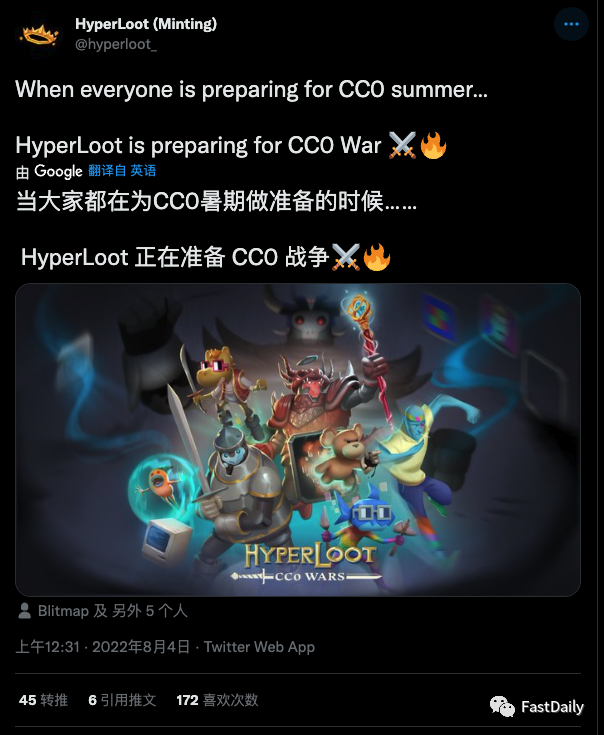
The NFT titled "The Eye (for Adventurers)" will begin minting this weekend. But it is not just a storybook based on Loot. The NFT also serves as a key to publish works through The Librarium, a new Ethereum platform for storytelling on-chain. Loot has birthed the Lootverse, and now the Lootverse can help others achieve breakthroughs in Web3 creation.
Hofmann spoke about the ever-expanding Lootverse, saying, "It's incredibly inspiring, beyond my imagination. I feel lucky that what I built in the past is being adopted by creators, but this time it feels and continues to feel different. So many people I respect are involved in this project."
The Future of Loot
The challenges facing Lootverse go beyond the coordination issues of many decentralized communities. Threepwave said one obstacle is the lack of a strong hand to guide the development of infrastructure and collaborative work. Multiple builders told the media that a larger issue surrounding Loot is related to the incentives for promoting further growth.
Loot is free, so there is no major sales revenue, and no initial royalties were set, meaning there is gradually no funding flowing into the community DAO treasury. Builders can create and sell their own NFTs to fund Loot-inspired projects, as some have done, but the market for those projects has thinned.
Timshel described the lack of funding in the first year as "a feature, not a bug," as it ensured builders' passion for the endeavor and created in an economical way. However, without funding incentives, Lootverse may only grow to a certain extent to ensure creators can invest their time and be compensated for their contributions to the ecosystem.
After the initial Loot hype faded, NFT holders voted to add a 5% royalty on secondary sales, which helped drive a few rounds of small funding, including providing Gitcoin for Loot-based projects. These were relatively modest rewards. After all, royalties were added after most high-value Loot sales, and the ETH entering the DAO was relatively small.
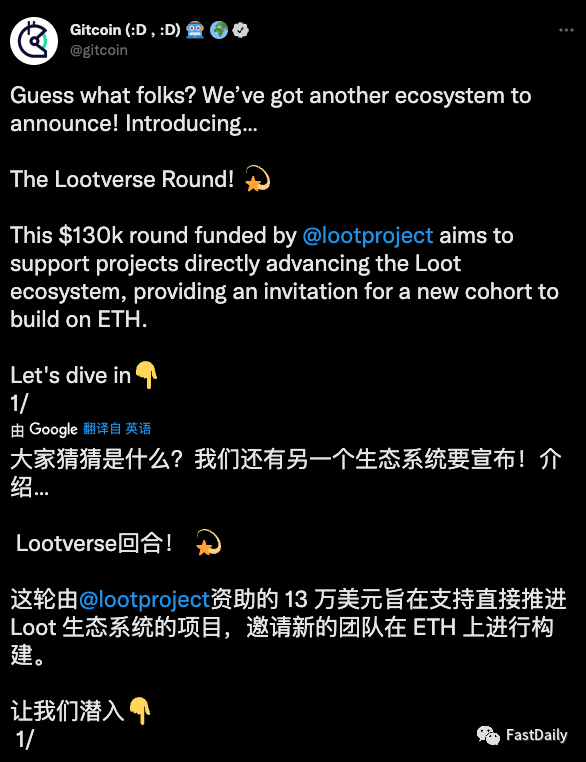
According to Threepwave's estimates, the Loot community includes about 150 active builders who all need to face funding issues. How to solve it? The answer may unexpectedly come from "Loot 2."
Timshel said that "the core leadership of Loot" (including Hofmann) is exploring an upgraded NFT collection that will help address the value accumulation issue and reward creators' contributions. Timshel described it as "an upgrade to Loot 2.0, like going from Windows 95 to Windows XP."
Timshel said the proposed next-generation Loot NFT project will seek to provide an "upgraded foundation for the Lootverse," and the new Loot bags will be similar—but "more vibrant, more alive." He pointed to Hofmann's tweet in April about "fair legends," which hinted that the contents of the bags contain grand adventures.
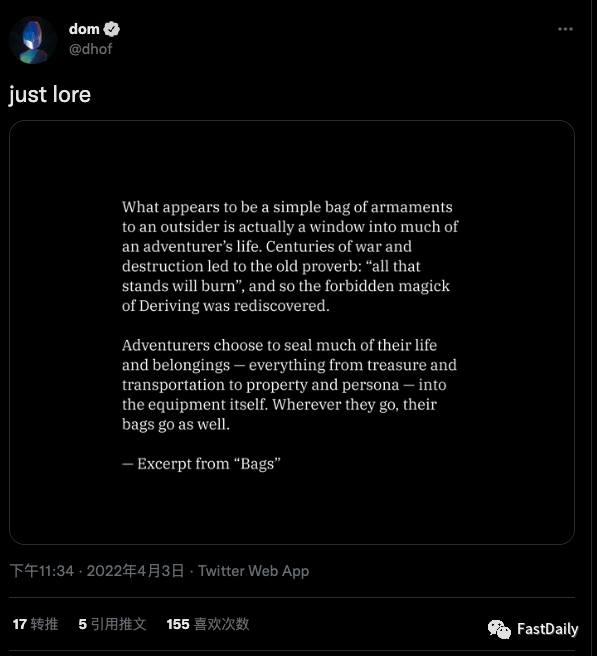
Timshel explained the premise: "The bag is essentially an infinite container of the universe, each bag is alive, not just a bag of trash on the ground. It's almost like a fantasy wallet that holds your stuff. This 'wallet' can also contain media, characters, history, passes, gear, and more."
In other words, this sounds a bit like a pass into the burgeoning Lootverse. And for the builders bringing this space to life, the revised launch and model will allow the DAOs behind the projects to offer Loot NFTs as a form of equity (or payment) in exchange for services benefiting the broader Loot community.
Timshel spoke about NFT grants, saying, "Now, you are a holder, and now you have a reason to build with us."
Whether Loot 2 will ultimately materialize remains to be seen, and there may be other solutions to address funding barriers. Nevertheless, the Lootverse is taking shape, and some products that people anticipated last year are on the verge of seeing the light of day. Builders told the media they believe this momentum will only continue to grow from here.
Hofmann said, "It really feels like a grand new fantasy world is being built and nurtured by the community."










